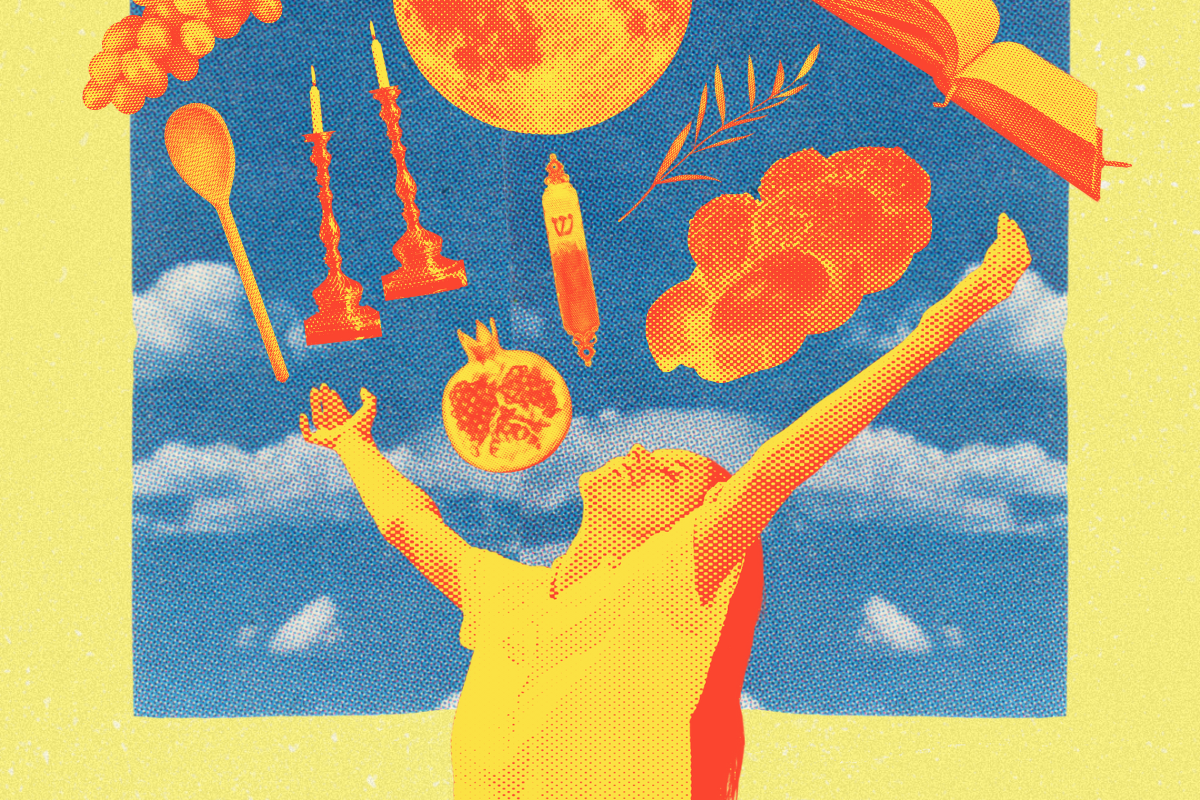It’s a hard time to find joy and peace as a Jewish person right now. With intense tragedy unfolding in front of our eyes, an unsettling election ahead of us and antisemitism on the rise, the things that may have brought us joy about our Jewish identity in the past often feel out of reach or even trivial right now.
But choosing joy is a radical act. Finding moments of celebration is an act of resistance. It is an acknowledgment that being Jewish is a complex and rich identity that allows us to hold grief and joy at once. In the words of devotional poet Mary Oliver, in her poem, “Don’t Hesitate”: “Joy is not made to be a crumb.”
We have the natural world, community, a rich lineage of cultural food, creativity, protection magic and a deep spiritual practice at our disposal. If you find your cup empty, I invite you into some ways I have been finding joy and peace in my Jewish identity in these times. Judaism is ever-evolving and changing, and I am grateful to have the choice to practice my Judaism in a way that is liberating and pleasurable to me. I want to share some of my joyful practices with you!
1. One of the most transformational ways I find joy as a Jewish person is by connecting to the natural world around me, most specifically by learning the names of Jewish plants around me. I’ve written about this before; I call it “meeting your plantcestors.” From drying peonies for a bath to going strawberry picking (yes, both plants are used in traditional Ashkenazi herbalism!), grounding myself in the plant world has been a source of happiness these last few months.
2. I also love spending time outside in Jewish community with food. Planning a picnic on Shabbat (Chicken salad on challah! Grapes!) or around Rosh Chodesh and the new moon is a restorative practice. And it’s even more fun if you include a Jewish craft, particularly one you did when you were younger, like decorating cloth napkins with fabric markers for challah covers or making charm bracelets with Jewish symbols. I love reading a folktale out loud with friends and setting our intentions for the next week or month. And if you are near a body of water, you can even create your own mikveh.
3. Food is central to so much of our community, so why not try a new spin on a favorite Jewish food or one you have never made before? My partner is Chinese Filipino, and we love making matzah ball soup and matzah brei with cultural twists. One year, during part of a local initiative called Shiva Delivers, which matches Jewish home cooks with groups experiencing mourning (Black folks following the death of George Floyd, currently Palestinians), we made matzah ball soup with Hainanese chicken soup broth. Making food and sharing it with other Jewish people, as well as with your larger community, is a gift for everyone involved. Some years, I have also made jam from local produce, like fig jam, and delivered it with challah. If this feels like too much of a lift for you, do it with some friends, Jewish or not! Jewish food is meant to be shared.
4. I’ve leaned more into my creative practice during this challenging time, deeply rooting it into my Judaism. For me, this means writing prayers in the form of poems and engaging with Jewish folktales and midrash, which I did for my book, “Sheologies.” We all come from a long line of Jewish artists. Your creative inspirational options are endless, from mystical paintings like those of Marc Chagall to the puppetry of Shari Lewis (Lamb Chop). It can be as simple as bringing watercolors to a park, listening to Jewish podcasts or playlists or journalling a prayer. And connecting to your creativity often leads you to connect to your spirituality or vice versa. Often, lighting candles, pulling angel cards (one of my favorite obscure Jewish practices) or writing prayers leads me to create.
5. Lastly, I’ve been connecting more deeply with protection magic. While that may seem “out there,” protection magic has been part of our legacy for thousands of years. From protecting our homes with a mezuzah to keeping garlic in our pockets, we have always found ways to magically/spiritually defend ourselves. I wear a pair of earrings every Shabbat (embroidered with lavender and my Shabbat candles). I often carry a bulksika, a Sephardic protection pouch, in my bag, which I change seasonally with found objects like acorns or stones and place prayers inside. These practices connect me with my ancestors and make me feel a little safer in my day-to-day life.
We all long for softness and deserve joy and peace in our Judaism. It is built of centuries of seekers, healers, visionaries and thinkers. Despite the current socio-political landscape of today, Judaism is an expansive and beautiful legacy. I invite you to try out these different ways of engaging with your Jewish self through the natural world, food, spirituality and protection magic. I pray that we can all find ways to celebrate our Judaism and that it can come to be part of our collective healing in a broken world.



